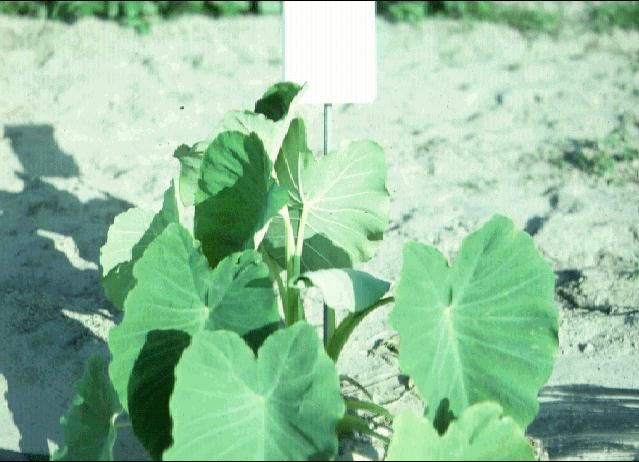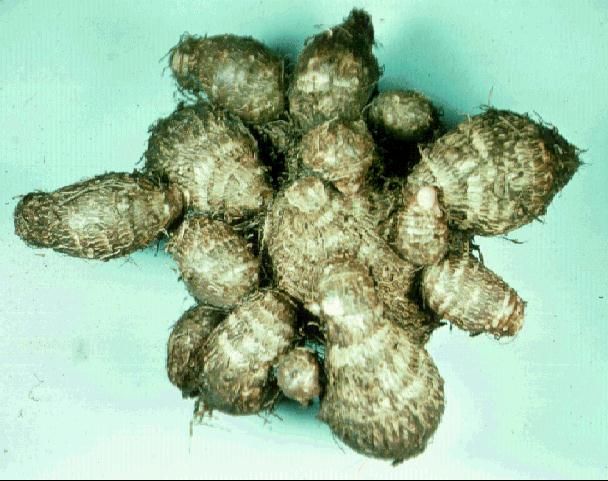Dasheen—Colocasia esculenta (L.) Schott.1
Dasheen is sometimes called eddo, taro, or malanga, although malanga more often refers to Xanthosoma sp. Dasheen is a tall-growing tropical plant that resembles the ornamental elephant-ear plant and the cocoyam. The broad, round- or heart-shaped velvety green leaves are borne 3 to 7 feet high. The leafstalk attaches near the center of the leaf and does not touch the notch, a characteristic referred to as peltate. These leaves are acrid and unpleasant tasting and should not be eaten until specially cooked and drained to remove the oxalic acid.

Credit: James M. Stephens
Dasheen is grown for its edible underground parts, which consist of one or more large central corms (called a mammy) and a cluster of swollen lateral tubers. The central corm may be as large as 8 pounds, but is usually 1 to 2 pounds. The smaller tubers are usually 2 to 4 ounces in size. Both corms and tubers have a scattered covering of a cloth-like husk that can be peeled away to improve the appearance.

Credit: James M. Stephens
Culture
Dasheen can be grown in all parts of Florida, but requires a warm, frostless season of at least 7 months. Some commercial acreage is found in south and north Florida, although there is considerably more of the similar cocoyams (malangas) grown in south Florida. Some home gardeners grow dasheen for food purposes, while many homeowners grow a few plants for a tropical landscaping effect.
In Florida, dasheen should be planted as soon as danger of spring frost is past. It grows throughout the summer and matures in October and November. At the time the tubers begin to form (August), the leaves begin to die back until very few leaves remain at digging time. Tubers left undug in north Florida remain in good condition until they start to sprout in the spring. However, they do not persist for many seasons in this fashion as a perennial.
Dasheen tubers are planted whole. Each tuber should be planted 3 inches deep and spaced 2 feet apart in 4-foot rows. Fertilize with garden fertilizer or use liberal amounts of compost worked well into the soil.
Use
The dasheen has three main uses: (1) corms and tubers used as a potato; (2) leaves as greens, once they have been boiled 15 minutes in water with a pinch of baking soda, drained, and then rinsed with boiling water; and (3) the blanched young shoots, obtained by forcing corms in the dark, furnish a tender vegetable having a flavor somewhat like that of mushrooms. A stew dish called calalou is prepared from dasheen leaves. Poi is made from fermented taro starch.


